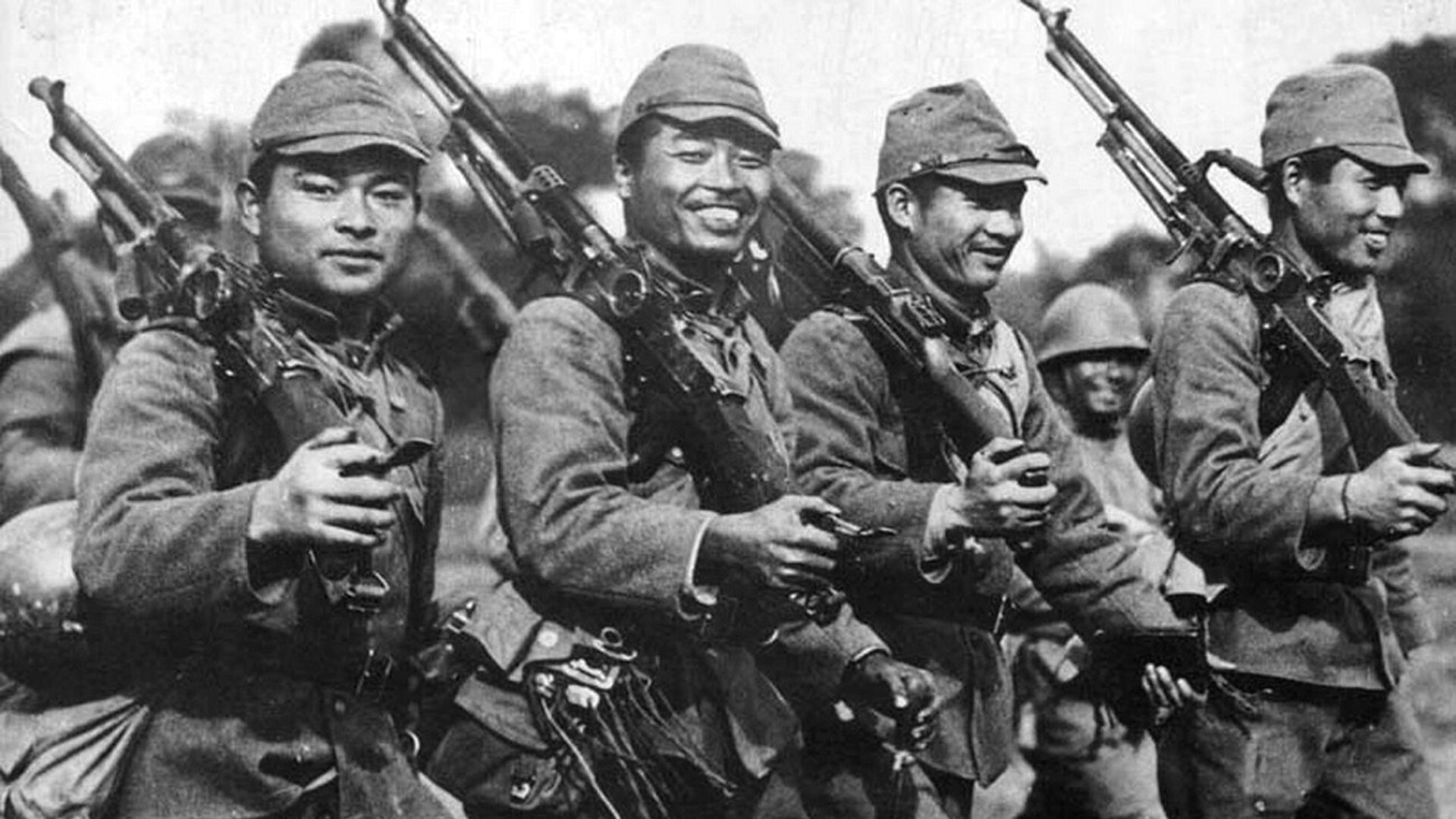
Japanese soldiers in 1937.
Pictures From History/Universal Images Group via Getty ImagesOn June 22, 1941, the German Wehrmacht invaded the USSR. At the same time, another army was preparing to cross the Soviet border in the Far East – the Japanese.
Berlin and Tokyo, allies by the Tripartite Pact and the Anti-Comintern Pact, were planning to rout Soviet armed forces in the shortest time possible and split the giant country among themselves. Everything was prepared for the Japanese Blitzkrieg, but, nonetheless, it never came. Why?
The Japanese started seriously thinking about prying away Siberia and the Far East from Russia back in 1918. The Russian Civil War, raging on the remains of the former empire, gave them a great opportunity to significantly widen the borders of their own state.
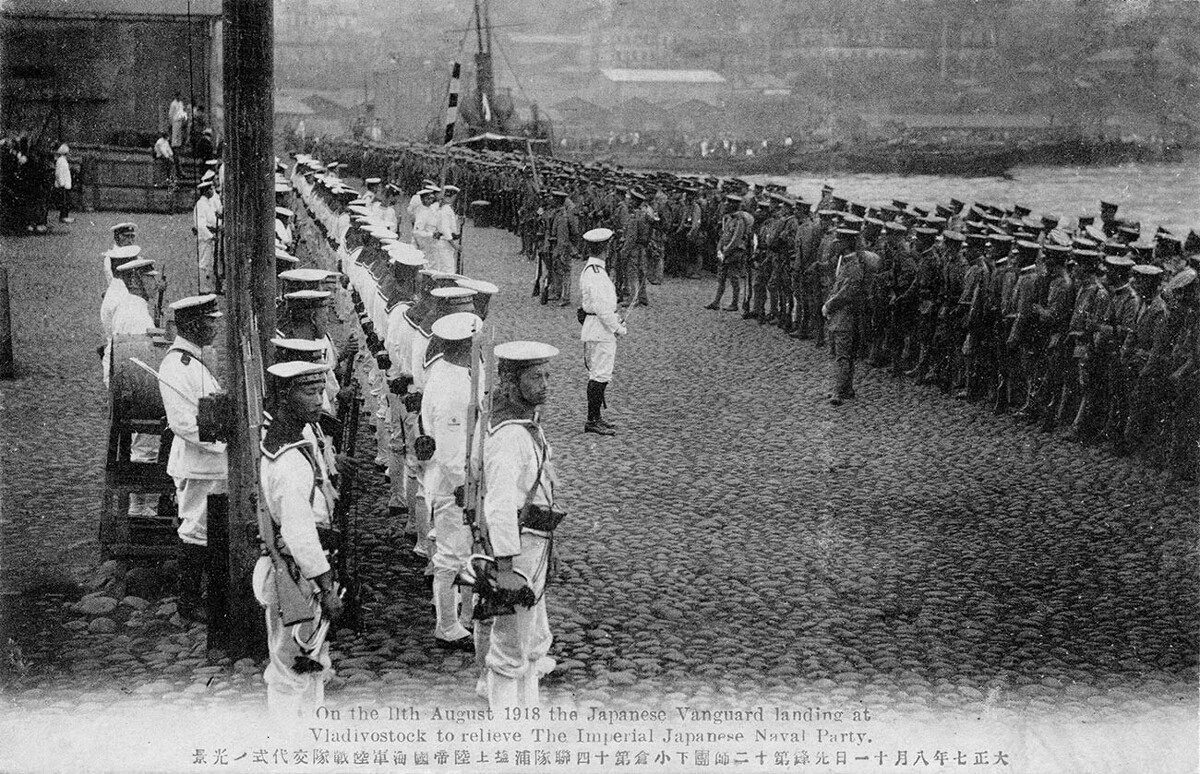
Japanese troops landing at Vladivostok, Russia, 11 August 1918.
Culture Club/Getty ImagesBy the beginning of 1920, the Japanese intervention forces in Russia numbered 100,000 people. However, facing a large-scale partisan movement and the diplomatic pressure of western countries, they were forced to withdraw.
The failure of the “Siberian expedition” didn’t make Tokyo forget its ambitions, however. Over the course of the entire 1920s, the General Staff of the Ground Forces of the Imperial Japanese Army was actively developing plans of war against the Soviet Union.
“Japan must advance, at least, to Lake Baikal, view the Far Eastern provinces it will capture as a part of its own empire and found military settlements there for many years ahead,” lieutenant colonel Yukio Kasahara, a military attaché to the Japanese embassy in Moscow claimed in 1931.
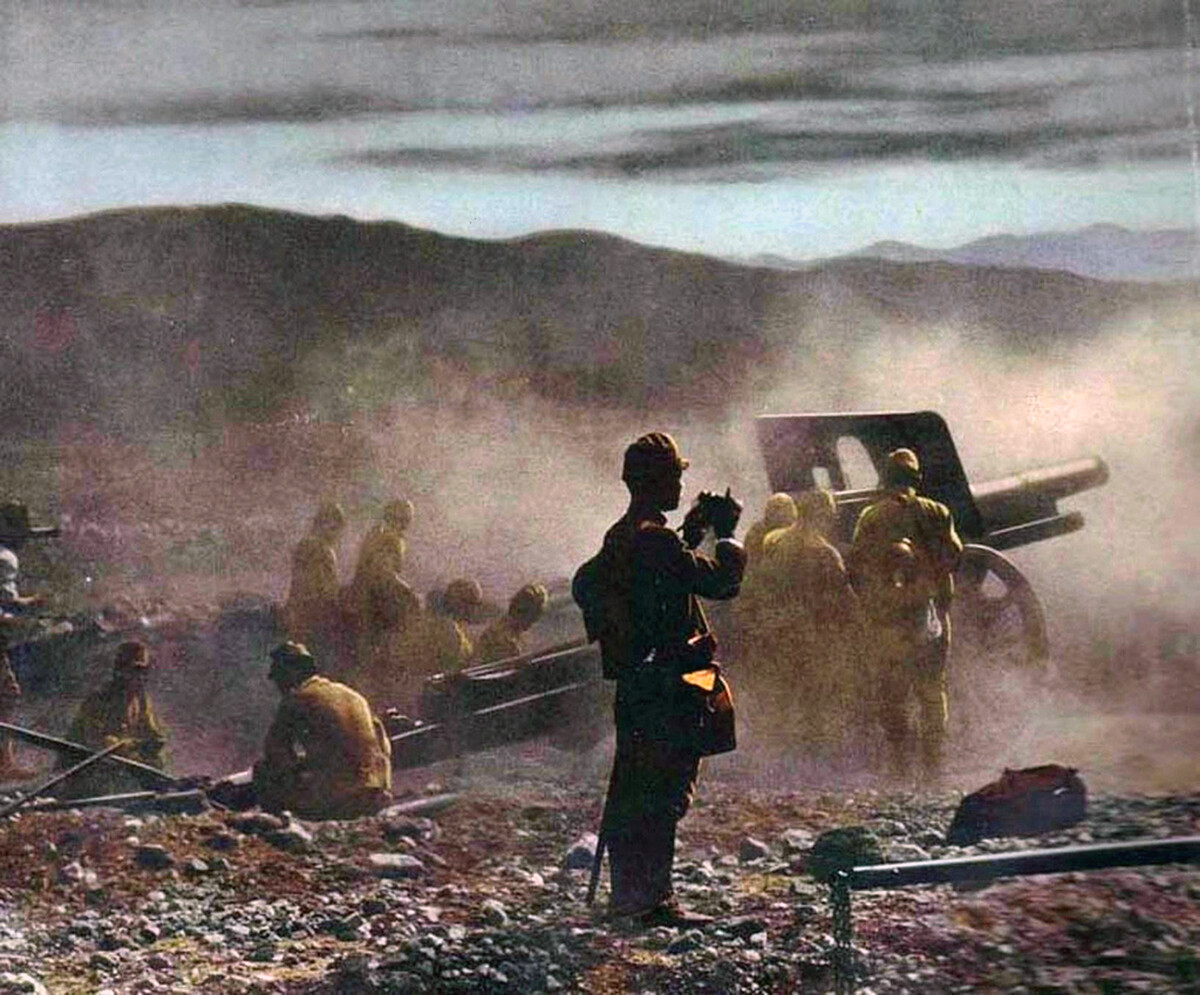
Japanese artillery in north China, 1938.
Pictures From History/Universal Images Group via Getty ImagesWith the capture of the north-eastern part of China (Manchuria) in 1932, the Japanese gained a powerful foothold for an attack on the USSR. Immediately, the construction of military aerodromes and railways leading to the Soviet border began; the troops, stationed in the region, began training in the methods of military actions against the Red Army.
In 1937, the Second Sino-Japanese War erupted and the Soviet Union began sending military support to the government of Chiang Kai‐shek. This caused extreme displeasure in Tokyo. The instances of provocations and USSR border violations by the Japanese troops rose in number, which, in the end, led to an armed confrontation.
In Summer 1938, the sides clashed in a local border conflict in the region of Lake Khasan; as a result, the Red Army pushed the Japanese forces out of its territory. But, the rout of the Japanese Armed Forces in the battles of the river Khalkhin Gol on the territory of Mongolia in Spring-Fall 1939 was a much more significant blow to the ‘Country of the Rising Sun’.
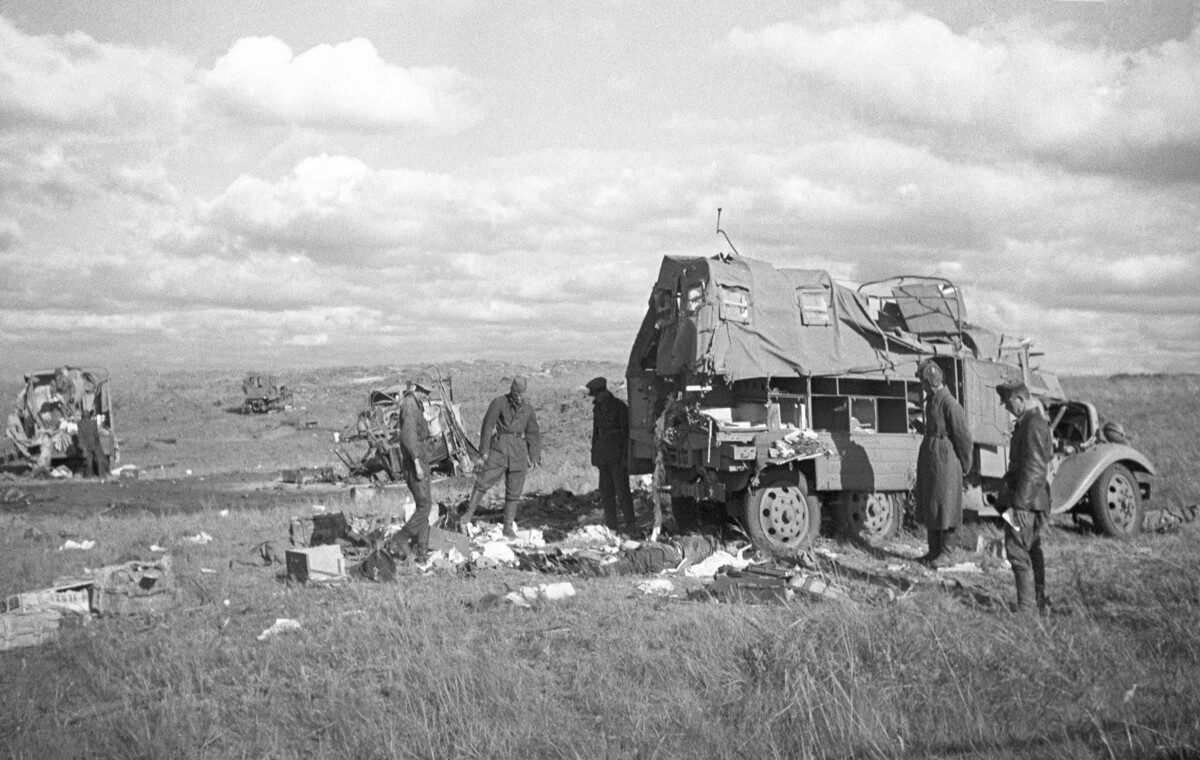
Japanese military unit staff office defeated by the Soviet soldiers near the Khalkhin Gol river.
Viktor Temin/SputnikThat’s how Marshal Georgy Zhukov described one of the episodes of this confrontation in his ‘Memories and Recollections’: “The Japanese repelled our attacks desperately. But, the formidable avalanche of tanks, armored vehicles and infantry advanced further and further, crushing and breaking everything that went under the tracks of tanks, the fire of the artillery and the strikes of the infantry. The Japanese threw all their air forces against our attacking troops, but it was met and attacked by our own air forces. The battle raged, unabated, the entire night. In the morning, with fresh forces arriving during the night, the Japanese attempted to launch an offensive, but this attempt of theirs was immediately quenched.”
The Red Army was much more combat-ready than the military-political leadership of Japan supposed. The empire, however, didn’t want to throw away their plans for a future war against the USSR. But, now, it began acting more cautiously and discreetly.

Japanese soldiers taken prisoner near the Khalkhin Gol river.
Viktor Temin/SputnikIt was this caution and discretion that urged Tokyo to sign a neutrality pact with Moscow on the 13th April of 1941. The Japanese were informed of the Wehrmacht invasion in the USSR being prepared, but they were not so eager to join it on day one. As the ‘Secret Diary of War’ of the Japanese general staff stated, the pact “gives additional time to make our own decision about the start of war against the Soviets”.
After the beginning of military action between the Soviet Union and Nazi Germany in June 1941, the Japanese began watching the situation on the front lines closely, waiting for a moment to deliver a strike. “The attack must happen when the Soviet Union, much like a ripe persimmon, will be ready to fall to the ground,” military minister Hideki Tojo stated at one of the government meetings.

Japanese Foreign Minister Yosuke Matsuoka signs the Neutrality Pact between the USSR and Japan.
Nikolai VlasikOn July 7, 1941, Emperor Hirohito approved the plan of the attack on the USSR, developed by the general staff, which was known as ‘Kantokuen’ (“Kwantung Army Special Maneuvers”). According to it, an 850-thousand strong group, concentrated in Manchuria and Korea, was supposed to invade the territory of the Soviet Union in several directions, capture Vladivostok, Khabarovsk, Petropavlovsk-Kamchatsky, rout the Mongolian People’s Republic, allied to the Soviets and, finally, reach the eastern shores of Lake Baikal.
Nazi Germany continued to urge Tokyo to participate in the future division of the territories of the fallen colossus as soon as possible. However, remembering the bitter lessons of Khalkhin Gol, the Japanese hesitated and waited for this colossus to truly fall.
As the empire waited, it didn’t sit idly. Their intelligence actively gathered information about the Red Army numbers in the Far East, about the places of its dislocation, military potential and movements within the country. This information was immediately sent to the Germans.
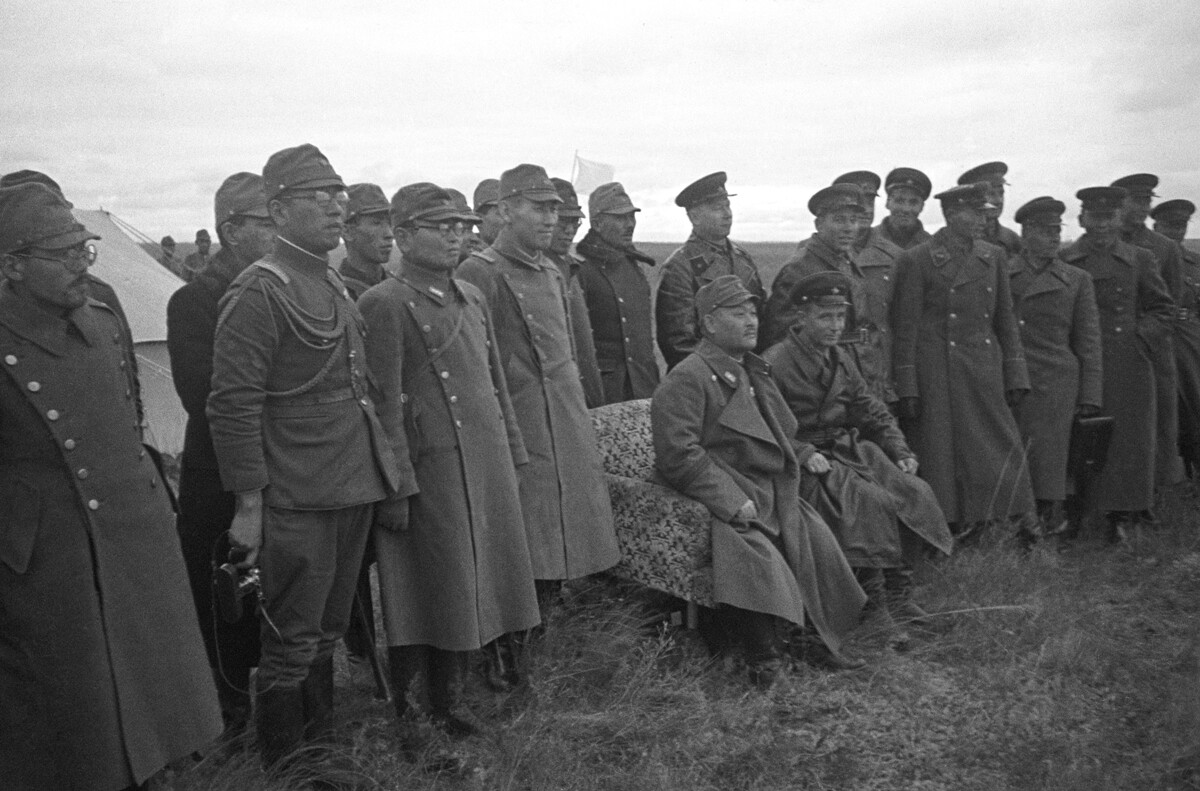
Soviet and Japanese command representatives during armistice in the Khalkhin Gol river area.
Viktor Temin/SputnikSabotage groups were regularly sent to the Soviet territory, which included Russian emigrants from the ‘Asano’ brigade. Combat and reconnaissance planes regularly violated the state border at the same time, as well as even full detachments of the Japanese army.
The first wake-up call sounded for Japan during the Battle of Smolensk in July-August 1941. Due to the fierce resistance of the Red Army, the German Blitzkrieg began to slow down considerably.
It was also important that the number of Soviet troops in the Far East not just remained quite high (about 500,000), it was steadily growing. Because of the catastrophic situation in the west, some detachments were sent to fight the Germans, but the deficit of soldiers was immediately replenished through mobilization among the locals.
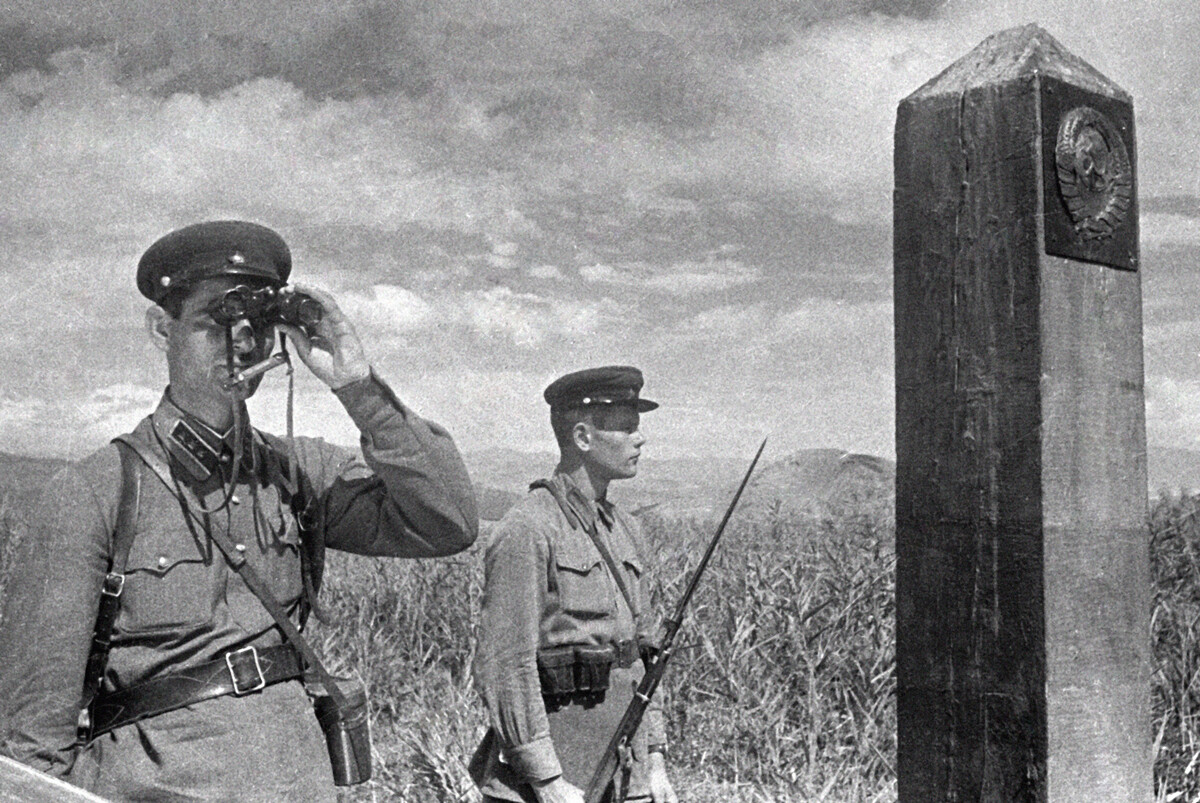
Soviet border guards, 1940.
Dmitry Debabov/SputnikIn the end, the X-hour, initially scheduled for August 10, was constantly postponed. The Battle of Moscow hadn’t even begun yet, but Tokyo had already decided that ‘Kantokuen’ should be delayed.
Instead of a campaign in the north, a war against the U.S. and the UK was chosen, as well as an advance in South-East Asia and the capture of the Dutch East Indies, which alone yielded 20 times more oil per year than all the territories controlled by the Japanese combined. In the case of a sudden failure of the USSR, a part of the Kwantung Army in Manchuria continued to wait combat-ready on standby.
After the rout of the Wehrmacht near Moscow and in Stalingrad, the faith of the Japanese in the defeat of the USSR received a blow. After the failure of the German ‘Operation Citadel’ during the Battle of Kursk in Summer 1943, it waned completely.
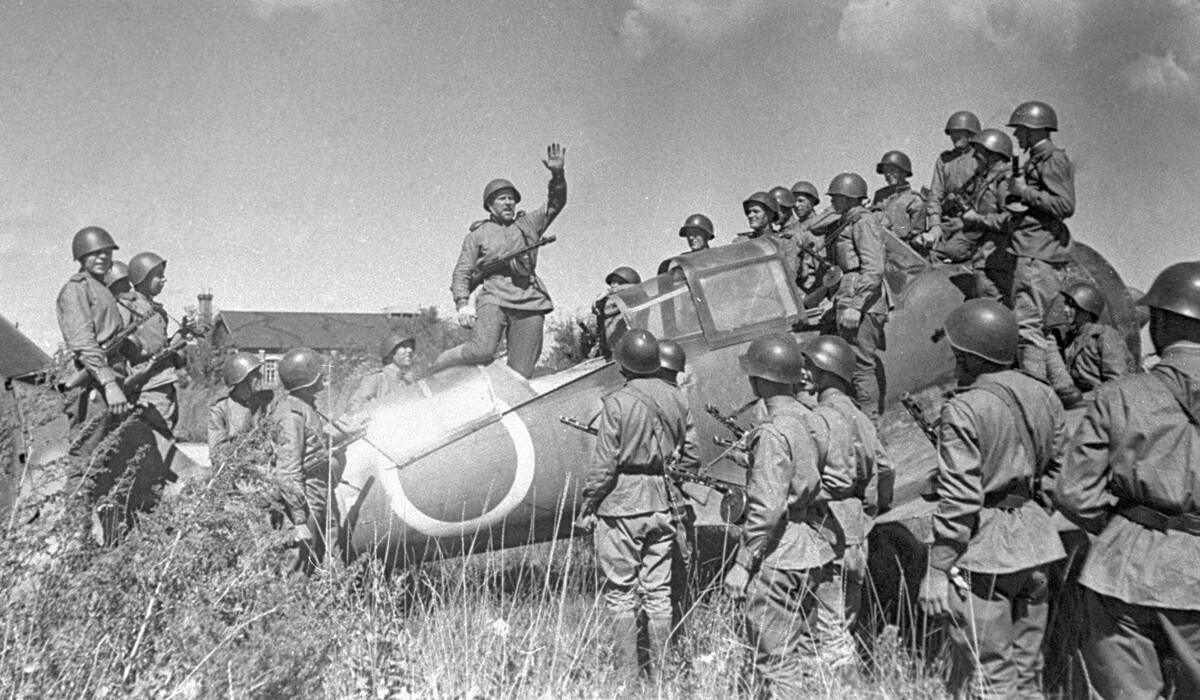
Soviet soldiers at the Japanese airdrome in Manchuria.
Fyodor Levshin/SputnikRealizing that the Axis countries’ defeat was within sight, the empire changed the course of its foreign policy towards the Soviet Union entirely. It tried to improve relations with its northern neighbor; in Fall 1943, it even offered its services as a mediator in reconciling Moscow and Berlin, but received a refusal.
The Japanese abandoned their plans of advance completely and began preparing for a possible Soviet invasion. The more the Red Army closed in on Berlin, the more real this threat became.
During the Yalta Conference in February 1945, Stalin promised Roosevelt and Churchill that the Soviet Union would enter a war against Japan 2-3 months after the capitulation of Germany.
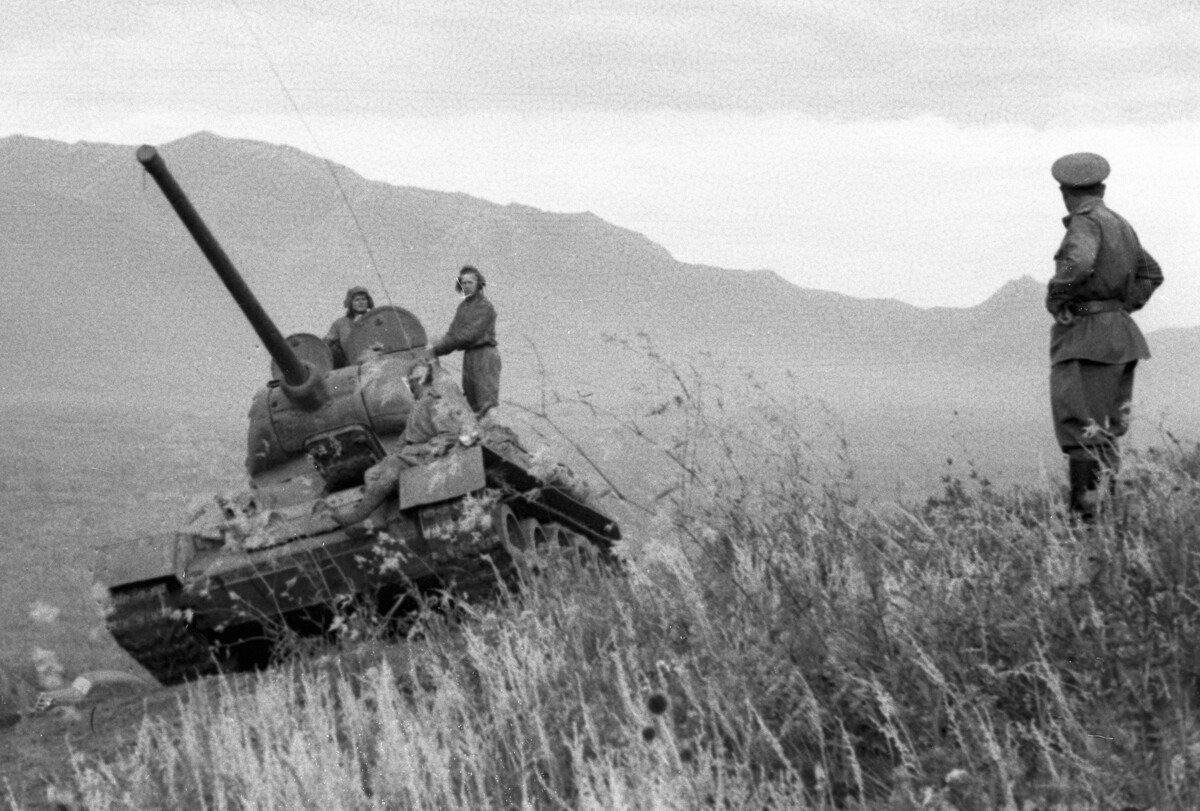
Soviet armor units crossing the Great Khingan.
Semyon Raskin/SputnikIn April of the same year, the USSR denounced the neutrality pact with the ‘Country of the Rising Sun’. The possibility to terminate the pact a year prior to its end was written in article 3 of the agreement.
As the reason for its actions, the Soviet side stated that the Japanese had helped Nazi Germany over the course of the entire war against the USSR and that they had continued to fight against the allies of Moscow – the U.S. and the UK. Hence, the continuation of the pact under such circumstances was meaningless.
On August 9, 1945, the Soviet Union declared war against Japan; on the same day, its troops entered the territory of Manchuria. And, in just ten days, they fully routed the Kwantung Army, which they were so afraid of before.
If using any of Russia Beyond's content, partly or in full, always provide an active hyperlink to the original material.
Subscribe
to our newsletter!
Get the week's best stories straight to your inbox